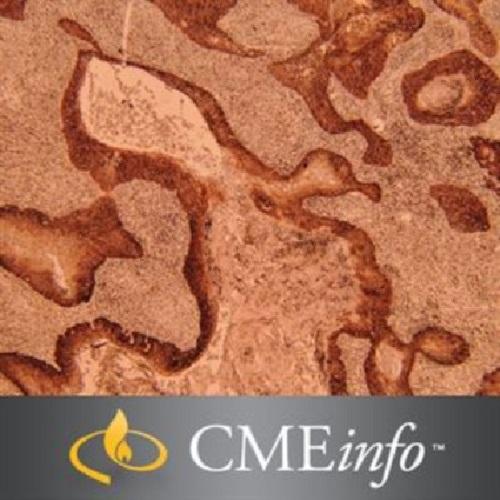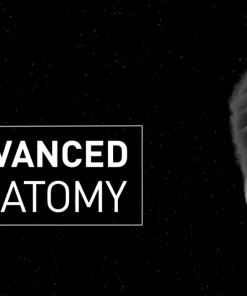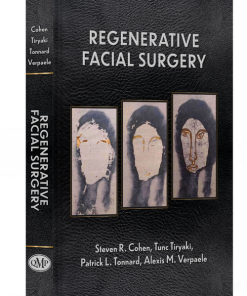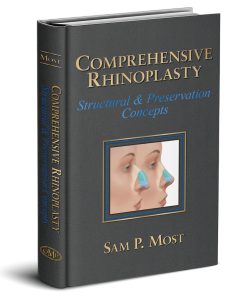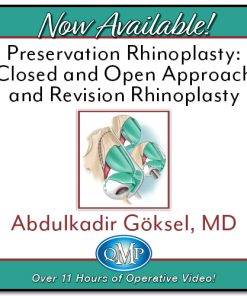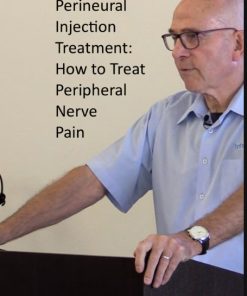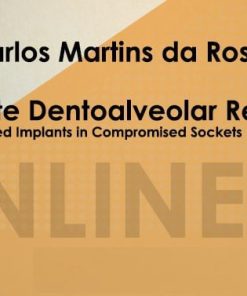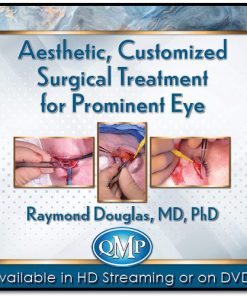- Effectively use clinicopathologic correlations to diagnose inflammatory skin diseases and alopecia
- Apply immunohistochemical tools to diagnose melanocytic lesions and lymphoid infiltrates
- Use precise, uniform terminology in the diagnosis of melanocytic lesions
- Histopathologic Evaluation of Scalp Biopsies – Dirk Elston, MD, FAAD
- Melanocytic Lesions –Rules to Live By – Dirk Elston, MD, FAAD
- Inflammatory Dermatoses – Think Like a Clinician – Dirk Elston, MD, FAAD
- Eosinophil Potpourri – Jennifer McNiff, MD
- Neutrophil Potpourri – Jennifer McNiff, MD
- Tip of the Iceburg: Indicators of Underlying Systemic Disease – Chris Jaworsky, MD
- Hospital Consult Biopsies – Chris Jaworsky, MD
- B-Cell Lymphomas – Jacqueline Junkins-Hopkins, MD
- Melanoma – Loren Clarke, MD
- Nail Pathology – Beth Ruben, MD
- T-Cell Lymphomas – Jacqueline Junkins-Hopkins, MD
- Pitfalls in Blistering Disorders – Christine Ko, MD
- Sebaceous Neoplasms and the Muir-Torre Syndrome – Christine Ko, MD
- Panniculitis – Leslie Robinson-Bostom, MD
- Vascular Tumors – Omar Sangueza, MD
- Unusual Skin Infections – Ronald Rapini, MD
- Dermpath Helpful Tips – Ronald Rapini, MD
- Pitfalls in Neoplastic Dermatopathology – David DiCaudo, MD
- Granulomatous and Histiocytic Disorders of the Skin – David DiCaudo, MD
- Advances in Evaluating Atypical Melanocytic Lesions – Dirk Elston, MD, FAAD
- Cutaneous Signs of Systemic Diseases – Dirk Elston, MD, FAAD
- Criteria That Discriminate – How We Make Diagnoses and How We Miss Diagnoses – Dirk Elston, MD, FAAD
- Cutaneous Infections – Dirk Elston, MD, FAAD
- Use clinicopathologic correlation effectively in the diagnosis of inflammatory skin diseases
- Use clinicopathologic correlation effectively in the diagnosis of alopecia
- Use immunohistochemical tools effectively in the diagnosis of melanocytic lesions and lymphoid infiltrates
- Use precise, uniform terminology in the diagnosis of melanocytic lesions
- Format: Video Files (.mp4 format) + PDF files.
- ==========================+======================
-
Note : We will send ebook download link after confirmation of payment via paypal success
Payment methods: Visa or master card (Paypal)
Dermatopathology Masters of Pathology Series 2018
Learn from Authoritative Dermatopathologists
Directed by Dirk Elston, MD, FAAD, Masters of Pathology Series – Dermatopathology highlights recent updates and emerging knowledge affecting this advanced subspecialty. Dr. Elston is joined by a distinguished faculty from leading institutions to cover pressing topics such as genodermatoses, lymphomas, unusual skin infections, vascular tumors, and more.
By completing this program, you’ll improve your ability to:
Discover New Guidelines
A clinically based update, this learn-at-your-own-pace course in dermatopathology provides a maximum of 17.50 AMA PRA Category 1 Credits ™. Available online, it provides access to unbiased, evidence-based content and case-based reviews so you may expand your knowledge and incorporate the latest guidelines into your daily practice. This activity meets the American Board of Pathology’s Maintenance of Certification (MOC) requirements for Part II (CME and SAMs) Lifelong Learning and self assessment.
Topics & Speakers:
Accreditation Statement
Oakstone Publishing, LLC is accredited by the Accreditation Council for Continuing Medical Education (ACCME) to provide continuing medical education for physicians.
Designation
Oakstone Publishing, LLC designates this enduring material for a maximum of 17.50 AMA PRA Category 1 Credits ™. Physicians should claim only the credit commensurate with the extent of their participation in the activity.
This activity has been registered as a Lifelong Learning (Part II) and Self-Assessment Module (SAM) to offer up to 17.5 credits in the American Board of Pathology’s (ABPath) Continuing Certification program.
Updated for Re-release: June 1, 2018
Date of Original Release: November 15, 2013
Date Credits Expire: November 15, 2016
CME credit is awarded upon successful completion of a course evaluation and a post-test.
Learning Objectives
After viewing this program, the participant will be better able to:
Intended Audience
This educational activity is intended for practicing pathologists.
Related Products
PLASTIC & RECONSTRUCTIVE SURGERY
PLASTIC & RECONSTRUCTIVE SURGERY
PLASTIC & RECONSTRUCTIVE SURGERY
PLASTIC & RECONSTRUCTIVE SURGERY
PLASTIC & RECONSTRUCTIVE SURGERY
PLASTIC & RECONSTRUCTIVE SURGERY
HEAD AND NECK SURGERY & OTOLARYNGOLOGY
PLASTIC & RECONSTRUCTIVE SURGERY
Comprehensive Rhinoplasty: Structural and Preservation Concepts
PLASTIC & RECONSTRUCTIVE SURGERY
PLASTIC & RECONSTRUCTIVE SURGERY
PLASTIC & RECONSTRUCTIVE SURGERY
Resident Webcast (Virtual) Registration For QMP Amsterdam 2024
PLASTIC & RECONSTRUCTIVE SURGERY
PLASTIC & RECONSTRUCTIVE SURGERY
Preservation Rhinoplasty: Closed and Open Approach and Revision Rhinoplasty
PLASTIC & RECONSTRUCTIVE SURGERY
Facial Aesthetics: Deep Plane and Beyond! 2024 – Cadaver Dissection Demonstrations & Lectures
Neurosurgery books PDF
Neurosurgery books PDF
Lyftogt Perineural Injection Treatment: How to Treat Peripheral Nerve Pain
PLASTIC & RECONSTRUCTIVE SURGERY
PLASTIC & RECONSTRUCTIVE SURGERY
PLASTIC & RECONSTRUCTIVE SURGERY
PLASTIC & RECONSTRUCTIVE SURGERY
PLASTIC & RECONSTRUCTIVE SURGERY
Pikos Institute IDR Immediate Dentoalveolar Restoration (Level 1)
PLASTIC & RECONSTRUCTIVE SURGERY
Deep Plane Face Lift: Finesse and Surgical Artistry 2023 QMP
ORTHOPAEDICS SURGERY
2019 AAOS Courses OnDemand: AAOS/POSNA/ISHA Surgical Treatment of the Pre-Arthritic Hip
ORTHOPAEDICS SURGERY
ORTHOPAEDICS SURGERY
2022 AAOS Value-Based Orthopaedic Care: A Tactical Field Guide
ORTHOPAEDICS SURGERY
2022 AAOS/OTA Orthopaedic Trauma Update in Tactics and Techniques
ORTHOPAEDICS SURGERY
2023 AAOS/ASSH Wrist and Elbow Arthroscopic and Open Procedures: Techniques and Innovations
ORTHOPAEDICS SURGERY
AAOS Innovative Techniques in Total Knee Arthroplasty 2022 (Videos)
ORTHOPAEDICS SURGERY
ORTHOPAEDICS SURGERY
ORTHOPAEDICS SURGERY
Campbell’s Core Orthopaedic Procedures, 2nd edition Original PDF & Video
HEAD AND NECK SURGERY & OTOLARYNGOLOGY
HEAD AND NECK SURGERY & OTOLARYNGOLOGY
2023 Osteocom Hard and Soft Tissue Augmentation 2.0 – Luca De Stavola
HEAD AND NECK SURGERY & OTOLARYNGOLOGY
Sinus Grafting for Implant Reconstruction (Pikos Online MasterClass Series) – Michael A. Pikos
HEAD AND NECK SURGERY & OTOLARYNGOLOGY
Osteocom Full Tilted Implants Prosthetic and Surgical Protocols 2023
HEAD AND NECK SURGERY & OTOLARYNGOLOGY
HEAD AND NECK SURGERY & OTOLARYNGOLOGY
GASTROINTESTINAL SURGERY
GENERAL SURGERY
PLASTIC & RECONSTRUCTIVE SURGERY
QMP BYTM 4: Advanced Facial Aesthetic Surgery Techniques Video Series
PLASTIC & RECONSTRUCTIVE SURGERY
VIDEO MEDICAL
ORTHOPAEDICS SURGERY
ORTHOPAEDICS SURGERY
HEAD AND NECK SURGERY & OTOLARYNGOLOGY
2023 Classic Lectures in Head & Neck Imaging – A CME Teaching Activity
PLASTIC & RECONSTRUCTIVE SURGERY
HEAD AND NECK SURGERY & OTOLARYNGOLOGY
Structure & Preservation Rhinoplasty Conference 2021 Istanbul
PLASTIC & RECONSTRUCTIVE SURGERY
Aesthetic Surgery of the Aging Face – Giovanni Botti, Mario Pelle Ceravolo (6 DVDs)
ORTHOPAEDICS SURGERY
HEAD AND NECK SURGERY & OTOLARYNGOLOGY
ANESTHESIA
ORTHOPAEDICS SURGERY
HEAD AND NECK SURGERY & OTOLARYNGOLOGY
PLASTIC & RECONSTRUCTIVE SURGERY
PLASTIC & RECONSTRUCTIVE SURGERY
Mayo Clinic Wound Symposium: The Edges of Wound Care 2023 (Videos+Assessment Quiz)
DERMATOLOGY
PLASTIC & RECONSTRUCTIVE SURGERY
South American Plastic Surgery Breast & Body Experts Cancun 2020
PLASTIC & RECONSTRUCTIVE SURGERY
PLASTIC & RECONSTRUCTIVE SURGERY
PLASTIC & RECONSTRUCTIVE SURGERY
PLASTIC & RECONSTRUCTIVE SURGERY
PLASTIC & RECONSTRUCTIVE SURGERY
QMP Advances in Corneal Neurotization, Facial Reinnervation, and Eyelid Plastic Surgery
PLASTIC & RECONSTRUCTIVE SURGERY
ISAPS Course & 12th International Eurasian Aesthetic Plastic Surgery Course 2021
PLASTIC & RECONSTRUCTIVE SURGERY
PLASTIC & RECONSTRUCTIVE SURGERY
PLASTIC & RECONSTRUCTIVE SURGERY
PLASTIC & RECONSTRUCTIVE SURGERY
Istanbul Live Regenerative Surgery Multispecialty Course 2022
PLASTIC & RECONSTRUCTIVE SURGERY
International Breast Symposium BREAST & BODY LiveSurgeryDay 2020
PLASTIC & RECONSTRUCTIVE SURGERY
Bella Eyes Trinity Lift & Brow Lift Live Surgery Course 2021
PLASTIC & RECONSTRUCTIVE SURGERY
PLASTIC & RECONSTRUCTIVE SURGERY
PLASTIC & RECONSTRUCTIVE SURGERY
American Academy of Cosmetic Surgery Annual Scientific Meeting Virtual Conference 2021
PLASTIC & RECONSTRUCTIVE SURGERY
2nd Beatufication Endoscopic Face & Closed Rhinoplasty Live Surgery Course 2022 complete DAY1+Day 2
PLASTIC & RECONSTRUCTIVE SURGERY
AMWC 19th Aesthetic & Anti-Aging Medicine World Congress 2021
PLASTIC & RECONSTRUCTIVE SURGERY
AICPE Prevention and Management of Complications in Breast Augmentation 2020
PLASTIC & RECONSTRUCTIVE SURGERY
PLASTIC & RECONSTRUCTIVE SURGERY
PLASTIC & RECONSTRUCTIVE SURGERY
PLASTIC & RECONSTRUCTIVE SURGERY
BYTM 4: Advanced Facial Aesthetic Surgery Techniques Video Series QMP
PLASTIC & RECONSTRUCTIVE SURGERY
The Aesthetic Society Nuances in Injectables The Next Beauty Frontier 2022
PLASTIC & RECONSTRUCTIVE SURGERY
ISAPS 15th International Caucasian Congress on Plastic Surgery & Dermatology Kolkhida 2021
PLASTIC & RECONSTRUCTIVE SURGERY

